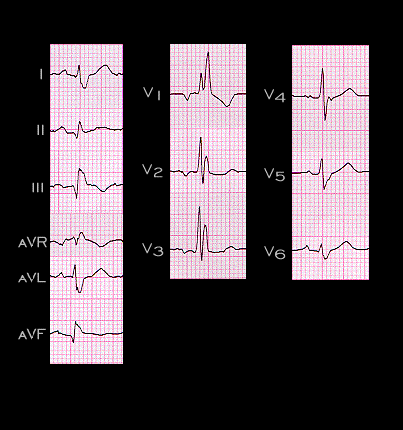
The ECG shown here demonstrates right bundle branch block with left posterior fascicular block. The left posterior fascicular block is manifested by the initial small R wave in leads I and aVL and small Q in leads II, and aVF. These are followed by the larger S waves in leads I and aVL and the R waves in II, III and aVF. The right bundle branch block is manifested by the increased duration of these terminal forces and by the broad R’ in leads aVR, V1, V2 and V3. The duration of the QRS complex is greater than 0.120 second, measuring approximately 0.160 seconds (160 ms). Try to draw the initial, main and terminal QRS spatial vectors in the frontal plane. Then draw the vector loop that encompasses these vectors.
